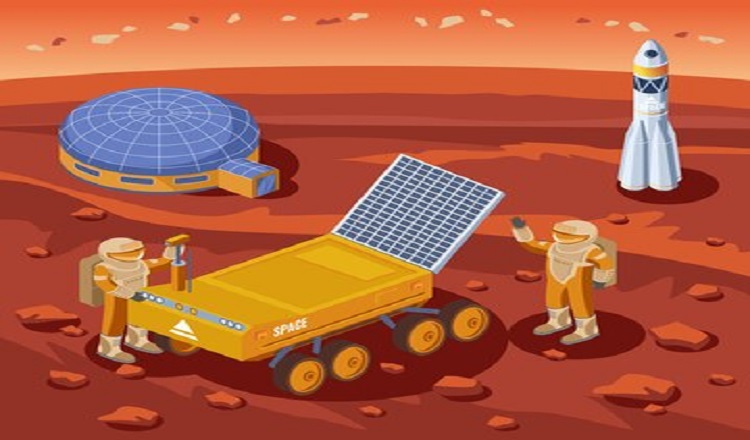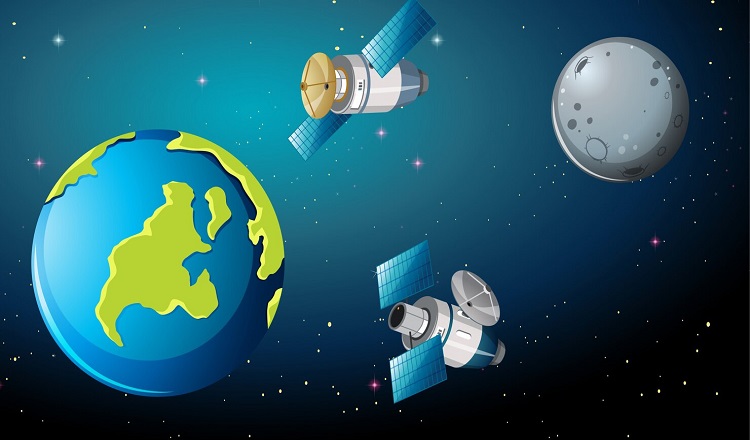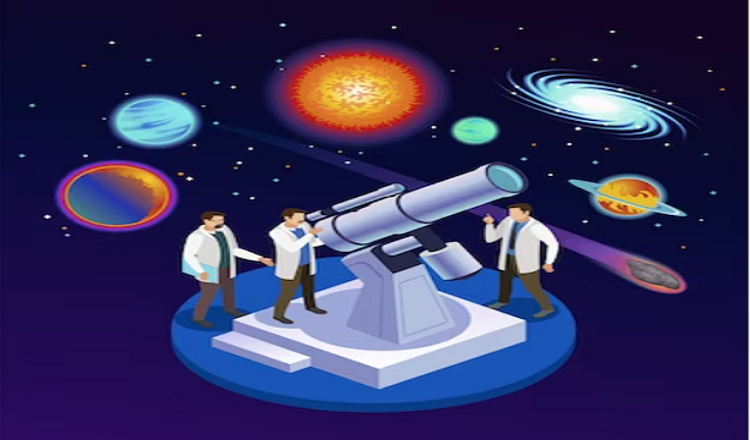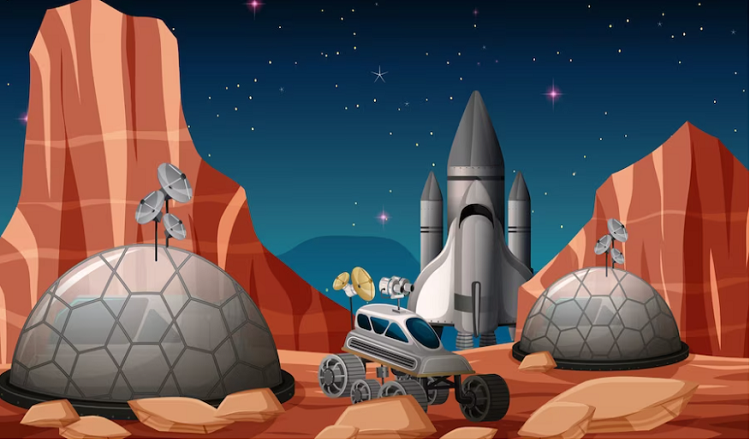Are we about to see the following great gold rush? I guess, sort of. A new age in space exploration is beginning with the possibility of mining asteroids. Yes, you read that correctly. The prospect of mining asteroids for minerals has caught the interest of businesspeople, scientists, and the general public.
But what exactly is mining an asteroid? It’s the process of removing rich minerals and resources from asteroids, to put it briefly. Asteroid mining is not entirely a novel idea. Although it has been present since the turn of the century, it has only recently become more popular as a result of technological developments and growing interest in space travel. Asteroid mining also has the potential to fundamentally alter the course of future space exploration, despite the fact that it may seem like a fantastical idea from science fiction.
Asteroid mining has a wide range of possible advantages, from releasing fresh resources to creating new business opportunities. The history and significance of asteroid mining, the state of the industry today, and prospective uses of asteroid mining in US space exploration in the future will all be covered in this blog. So let’s get ready for this thrilling adventure into the world of asteroid mining and buckle up!
The State of Astroid Mining Right Now
With only a small number of companies actively pursuing initiatives, asteroid mining is still in its infancy in the USA. Two of the first businesses to enter the market were Deep Space Industries and Planetary Resources, which are now owned by ConsenSys Space. Several businesses are now working on various facets of asteroid mining, including in-situ resource utilisation and space transportation.
However, there are considerable obstacles that current asteroid mining projects must overcome. These difficulties include a lack of cutting-edge mining technology, the expensive expense of space flights, and the difficulty in finding and describing appropriate asteroids. The regulatory environment around asteroid mining, which is currently under development and is governed by international accords, is a substantial additional barrier. Asteroid mining continues to draw investment and creativity despite these challenges, making it a fascinating field to follow.
Possibilities of Mining Asteroids
Resources that are necessary for space travel and potentially life on Earth could become available through asteroid mining. Water, which may be utilised for rocket fuel and life support systems, as well as metals like platinum, gold, and iron are some of the potential resources that could be obtained by asteroid mining. These materials could be utilised to create consumer gadgets, infrastructure, and spaceships.
Asteroid mining has a considerable economic potential. A single asteroid may contain minerals and precious metals worth trillions of dollars, according to some estimates. These resources might be extracted and used to launch new companies and provide employment both on Earth and in space. Asteroid mining could also lower the price of space exploration by supplying on-site minerals.
Asteroid mining may provide benefits to the environment in addition to economic ones. We could lessen our reliance on Earth’s extractive industries, which can have negative environmental effects, by using materials from asteroids. By minimising the need to launch supplies from Earth, exploiting space resources could also assist lessen the environmental impact of space exploration. Overall, asteroid mining has huge potential advantages and may usher in a new era of space exploration and economic expansion.
Regulatory and Legal Considerations
Asteroid mining’s legal and regulatory environment is complicated and continually developing. According to the Outer Space Treaty of 1967, which states that celestial bodies and outer space are open to exploration and use by all countries, the United States currently recognises the right of its nationals to engage in asteroid mining activities.
However, there are still a number of legal and regulatory issues that asteroid mining firms must deal with. Companies must abide by current laws and rules, for instance those governing intellectual property, space travel, and environmental preservation. In addition, debates regarding how to handle concerns about property rights and responsibility for harm brought on by asteroid mining operations are still going on.
Future policy considerations for asteroid mining will probably become more important as the sector develops. The requirement for an international framework to control asteroid mining operations and provide fair access to resources is a topic of continuous discussion. Policymakers will also need to deal with issues like safety, risk reduction, and the moral ramifications of mining space for resources.
Technological Developments in Mining Asteroids
The possibility of asteroid mining has been greatly enhanced by technological advancements. Robotic mining machinery, remote sensing and imaging systems, and in-situ resource utilisation techniques are some of the technologies now used in asteroid mining. Although these technologies are still in their infancy, they are rapidly developing and getting better.
Emerging technologies are being created to further improve the industry’s mining capacities as it expands. Asteroid prospecting drones, which could assist discover appropriate asteroids for mining, and space-based 3D printing systems, which could enable on-site fabrication of structures and equipment, are a couple of these cutting-edge technologies. Additionally, attempts are being made to create sophisticated mining methods like electrostatic separation and laser drilling.
In general, the progress of asteroid mining will depend heavily on technological advancements. We may anticipate the development of asteroids resource extraction techniques that are more effective, efficient, and sustainable as the industry develops and new technology are introduced.
Potential Uses for Mining Asteroids
Mining from asteroids has the potential to revolutionise both space travel and practical uses on Earth. Asteroid mining might offer a dependable and sustainable source of supplies for lengthy trips, including fuel, water, and construction materials. Thus, it would be less expensive and less difficult logistically to launch these resources from Earth.
Resources from asteroids could be used for a variety of purposes on Earth, including manufacturing, building, and renewable energy. For instance, the usage of platinum group metals from asteroids in catalytic converters for cars could help cut down on air pollution. Asteroid mining might also enable us to rely less on nonrenewable resources like fossil fuels.
Future asteroid mining applications have a huge range of potential uses. Asteroid mining could result in new markets and technologies, such as space-based manufacturing and in-situ resource utilisation, in addition to space exploration and Earth uses. Overall, the fascinating uses of asteroid mining could have a significant impact on Earth and space.
Conclusion
Finally, asteroid mining has the potential to change the course of future space travel and open up fresh possibilities for Earth’s resource extraction. Water, metals, and minerals found in asteroids could serve as a sustainable source of materials for long-term space missions, eliminating the need to send supplies from Earth and possibly paving the way for the colonisation of other planets.
However, a number of issues still need to be resolved, including as technological constraints, legal and regulatory issues, and environmental implications. Together, governments and business executives must create a framework for ethical and sustainable asteroid mining practises.
Despite these difficulties, asteroid mining has considerable potential advantages, and the sector is already advancing. We may anticipate even more fascinating changes in the future as new technology evolve and the industry expands.
We must approach the asteroid mining sector with caution, accountability, and a long-term perspective if we are to fully realise its promise. By doing this, we can maximise the use of space resources and keep expanding the frontiers of space travel.
Read More You May Like:











